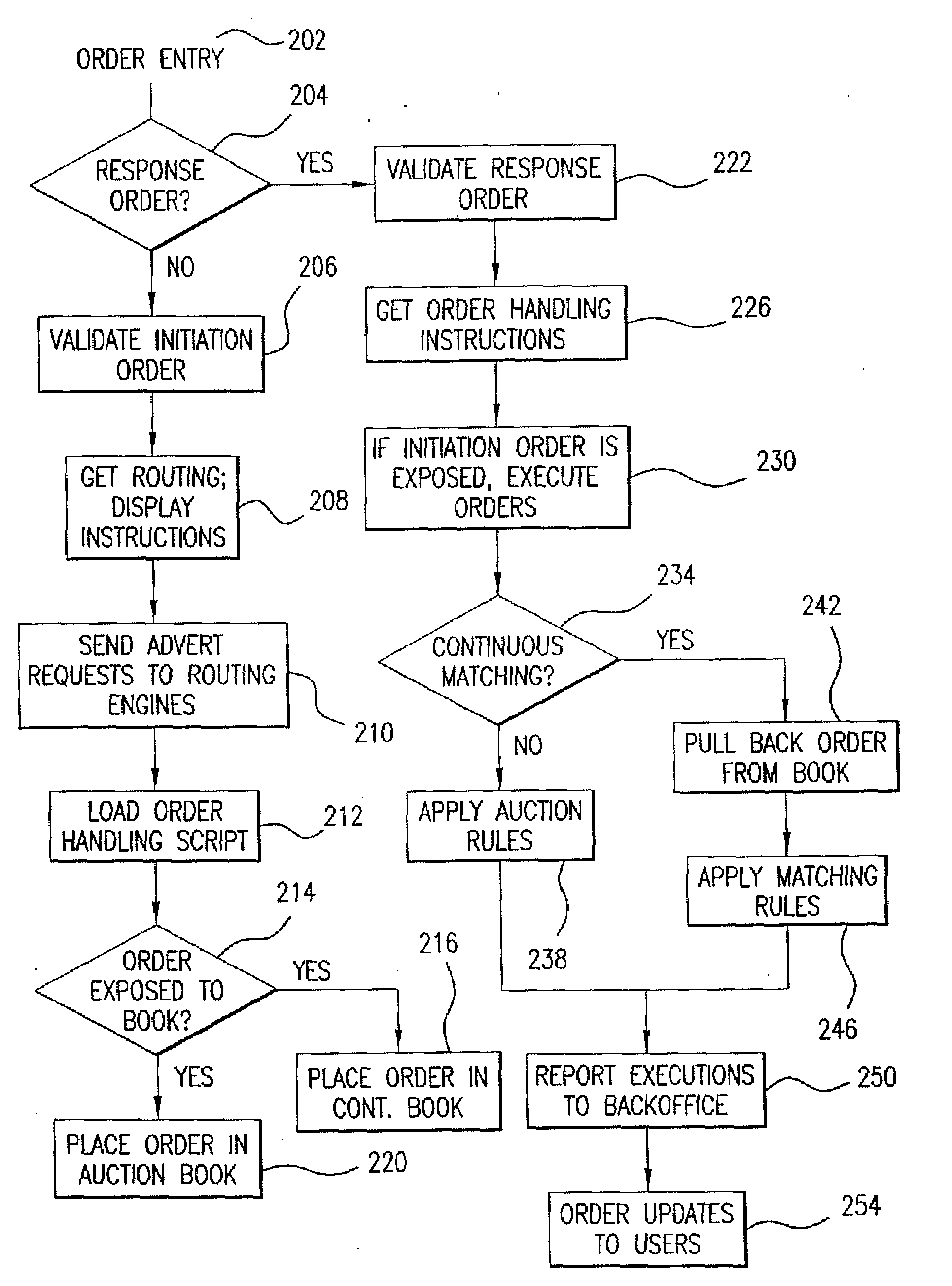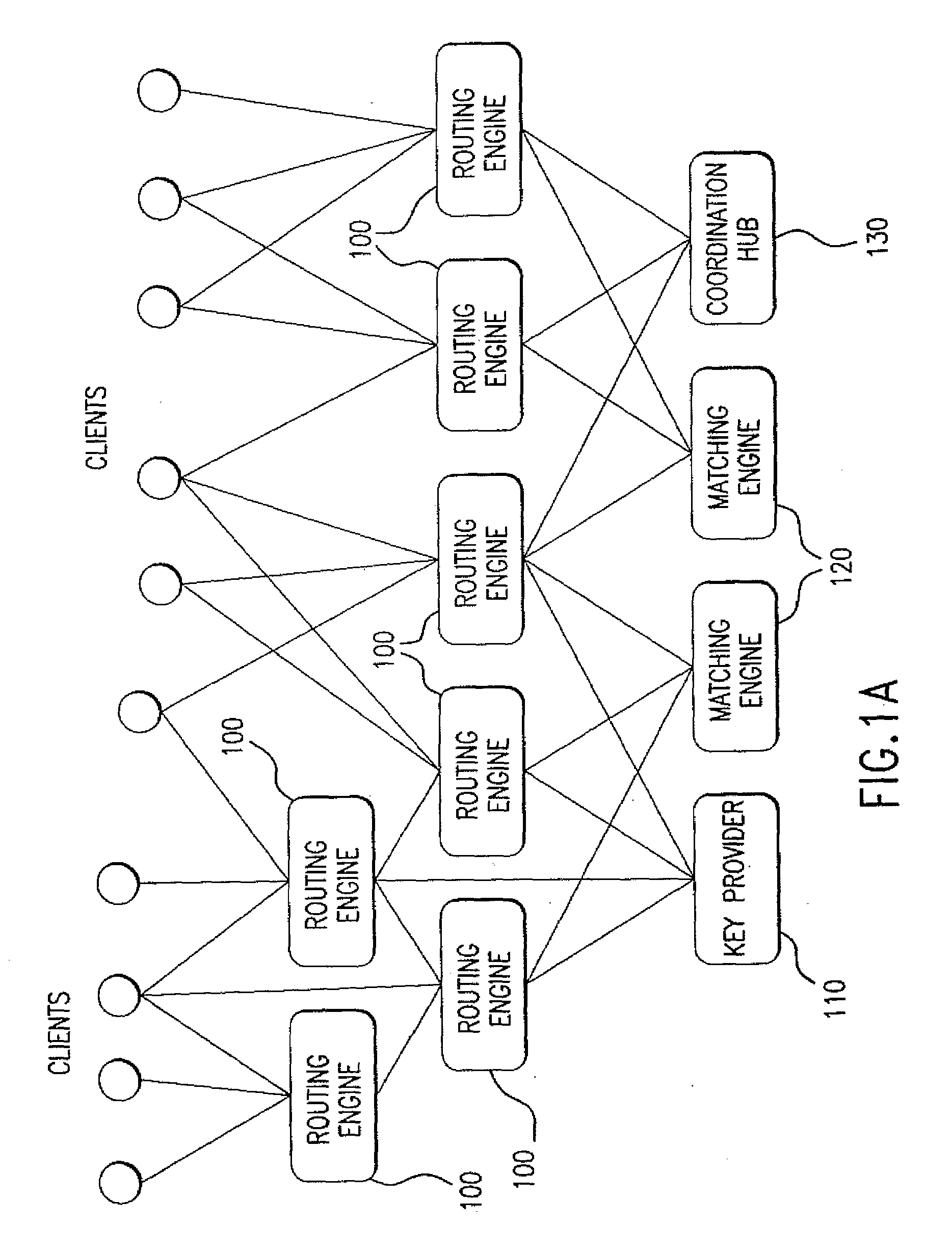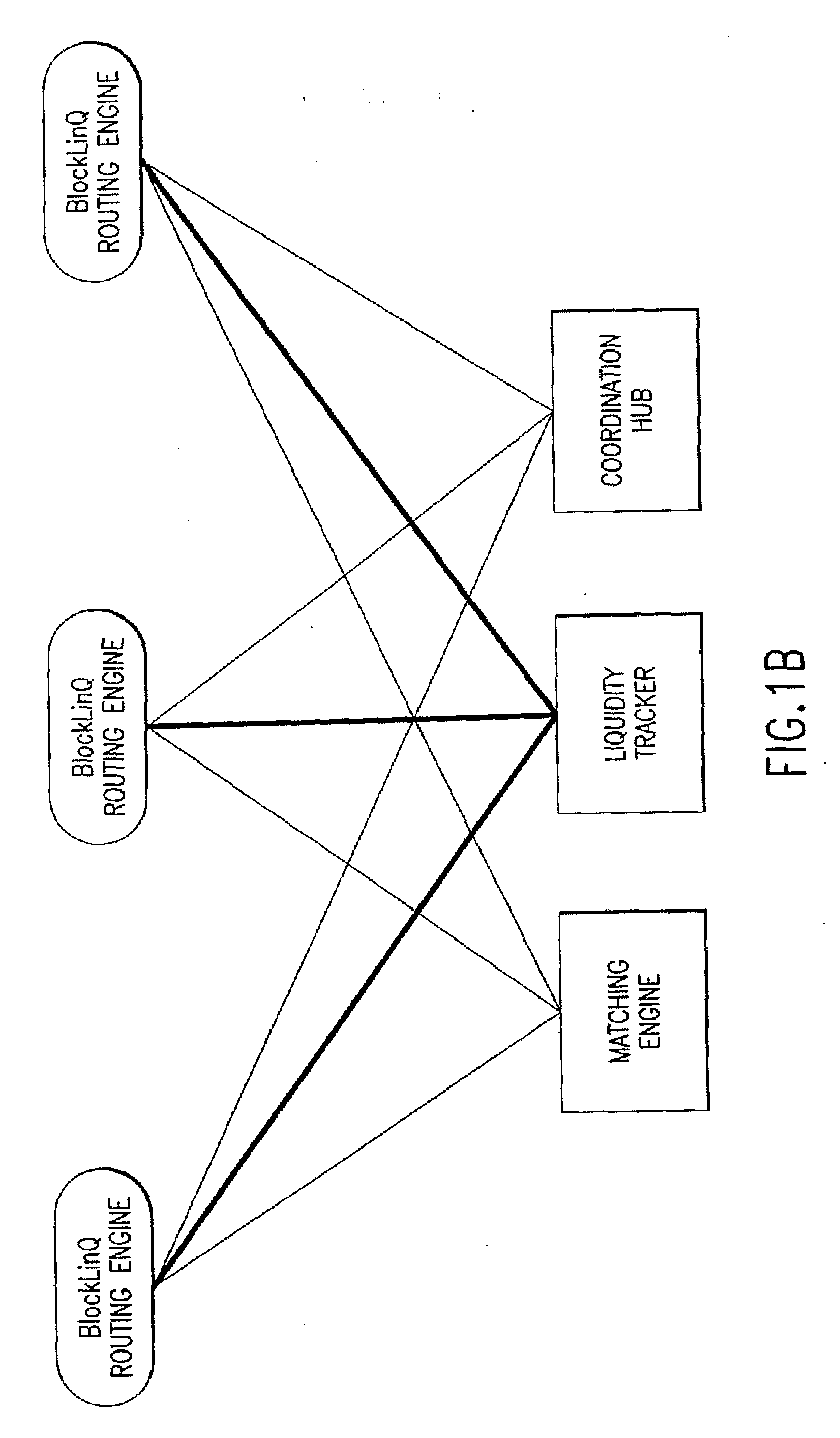Method for managing distributed trading data
a technology for trading data and distributed trading, applied in the field of managing distributed trading data, to achieve the effect of avoiding potential system misuse, maximizing internalization rate, and multiplicative valu
- Summary
- Abstract
- Description
- Claims
- Application Information
AI Technical Summary
Benefits of technology
Problems solved by technology
Method used
Image
Examples
Embodiment Construction
[0030]Definitions. A “client” is an individual or entity that will receive targeted messages. An “implementation” is a single deployment of the disclosed distributed computer system, connected to a communication network. A “participant” is an individual or entity that agrees to host an implementation of said distributed computer system. The “score” of a client is a real number that represents the net value of showing information to this client, considering the positive contribution from the likelihood that the order will be filled and subtracting the negative contribution from the risks associated with information leak. A “score evaluation function” is an algorithm for determining a client score from data that is contributed by one or more data providers.
[0031]A preferred embodiment of the present invention comprises a system that lets a first participant (the “initiator”): (1) enter an order to buy or sell a fungible item such as a publicly traded security into a matching engine or...
PUM
 Login to View More
Login to View More Abstract
Description
Claims
Application Information
 Login to View More
Login to View More - R&D
- Intellectual Property
- Life Sciences
- Materials
- Tech Scout
- Unparalleled Data Quality
- Higher Quality Content
- 60% Fewer Hallucinations
Browse by: Latest US Patents, China's latest patents, Technical Efficacy Thesaurus, Application Domain, Technology Topic, Popular Technical Reports.
© 2025 PatSnap. All rights reserved.Legal|Privacy policy|Modern Slavery Act Transparency Statement|Sitemap|About US| Contact US: help@patsnap.com



